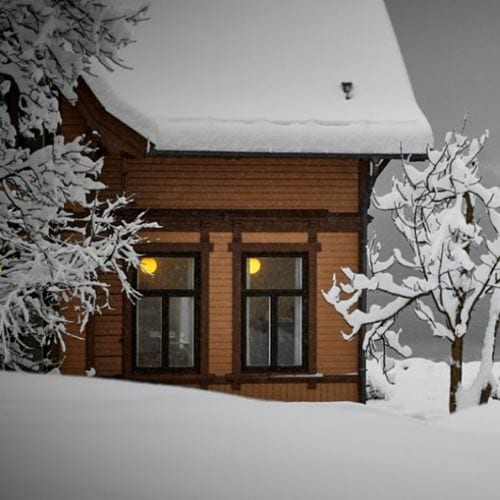Before You Begin
At Champion Services, we understand how inconvenient and costly a leaking faucet can be. Not only is it annoying to have a dripping sound in the background, but it also wastes water over time. In fact, the U.S. Environmental Protection Agency estimates that a single leaky faucet can waste up to 3,000 gallons of water annually! That’s enough water for 180 loads of laundry or two months’ worth of showers!
The Benefits of Fixing a Leaky Faucet
By fixing a leaking faucet, you can save hundreds of dollars on your water bill every year and help conserve valuable resources. Additionally, if left unchecked, the leak may cause damage to other parts of your plumbing system or even your home itself. To avoid this potential long-term damage and expense, it is important to promptly address the problem.
DIY Repair vs Professional Assistance
Fortunately, many plumbing issues are relatively easy to fix with basic tools and supplies – including a leaking bathtub faucet. With step-by-step instructions from Champion Services, you can easily repair most types of bathtub faucets yourself in an afternoon without having to call in professional help. However, if none of these methods work or if you don’t feel comfortable doing the repair yourself – don’t hesitate to contact us for assistance! Our team at Champion Services is always ready to provide top-notch services at a fair and reasonable price point!
Bathtub Filler or Faucet Placement Options
Bathroom fixtures such as bathtub fillers and faucets can be mounted in various ways, depending on the style of the bathroom and personal preference. Each mounting option has its own advantages and drawbacks, so it is important to choose the one that best suits your needs.
Deck Mounted
The most common type of bathtub filler or faucet is deck mounted, which means it is installed directly onto the rim of the bathtub. This type of mount offers an easy installation process and makes for a neat look since all components are contained within the tub’s rim. However, this type of mount may require additional plumbing work if you don’t have existing holes in your tub’s deck for installation.
Wall Mounted
Wall mounted bathtub fillers and faucets are installed directly onto a wall near the tub, eliminating the need for any holes in the tub itself. This type of mount offers a sleek, modern look and allows for more flexibility when it comes to placement. However, installation can be more complicated than with other types of mounts due to the need for additional plumbing work.
Floor Mounted
Floor mounted bathtub fillers and faucets are installed directly onto the floor near the tub, allowing for more flexibility when it comes to placement. This type of mount also eliminates any holes in the tub itself, making it a great choice for those who want a clean look without having to do extra plumbing work. The downside to this type of mount is that it can be more difficult to install since it requires precise measurements and careful alignment with other fixtures in order to ensure proper operation.
Tub Mounted
The least common type of bathtub filler or faucet is tub mounted, which means it is installed directly into a hole drilled in the side of the tub itself. This type of mount offers an easy installation process but can be difficult to maintain due to its location within the tub itself. Additionally, this type of mount does not offer much flexibility when it comes to placement since there must be enough space inside the tub for installation.
No matter which mounting option you choose for your bathtub filler or faucet, make sure you measure carefully beforehand to ensure proper fitment and operation. Additionally, if you’re unsure about how to properly install your chosen mount or fixture yourself, consider seeking professional help from a qualified plumber or installer in order to avoid costly mistakes.
Preparatory Steps to Fix a Leaking Bathtub Filler / Faucet
When attempting to fix a leaking bathtub faucet, it is important to take the necessary preparatory steps before beginning the repair process. Before starting, check to see if any of the parts need to be replaced. If so, make sure to purchase these parts in advance and have them on hand when you begin. It is also important to remove all of the old parts from the faucet so that you can get an accurate replacement for each part.
Tools and Materials Needed
Before starting the repair process, make sure that you have all of the necessary tools and materials on hand. You will need a flathead screwdriver, a Phillips head screwdriver, adjustable pliers, a wrench, a basin wrench, a bucket or basin for catching water, and some type of lubricant such as petroleum jelly or silicone grease. You may also need some replacement parts such as washers or gaskets depending on what type of faucet you have and what needs to be replaced.
Shutting Off Water Supply
The first step in fixing a leaking bathtub faucet is to shut off the water supply. This can usually be done by turning off the main water supply valve located near your home’s water meter. Once this has been done, open both hot and cold faucets in the bathtub so that any remaining water can drain out before beginning repairs.
Identify your Faucet Type
When attempting to fix a leaking bathtub faucet, it is important to first identify the type of faucet you are dealing with. There are two main types of bathtub faucets: double-handled and single-handled.
Double-Handled Faucets
Double-handled faucets have two separate handles for hot and cold water. These handles are usually located on either side of the spout and can be used to control both the temperature and flow rate of the water. The most common cause of leaks in this type of faucet is worn out or damaged washers, O-rings, or gaskets.
Single-Handled Faucets
single-handled faucets have one handle that controls both the temperature and flow rate of the water. This handle is usually located at the base of the spout and operates using a cartridge system. Common causes of leaks in this type of faucet include a faulty cartridge or worn out O-rings or seals.
Regardless of which type of faucet you have, it is important to properly identify it before attempting any repairs. This will ensure that you purchase the correct parts for your specific model, saving time and money in the long run.
Required Equipment and Materials
Repairing a bathtub faucet can be a relatively simple task if you have the right tools and materials. The required equipment and materials will vary depending on the type of faucet you have, but there are some common items that are needed for both a double-handled and single-handled faucet.
Tools
For either type of bathtub faucet, you will need some basic tools to help with disassembly and reassembly. These include:
- A flathead screwdriver
- A Phillips head screwdriver
- Adjustable pliers
- A basin wrench or socket wrench
- A small hammer
You may also need an adjustable wrench, needle nose pliers, a putty knife, or other specialized tools depending on the individual components of your faucet.
Materials
In addition to tools, you will also need some materials for repair. This includes:
- Replacement parts (e.g., washers, O-rings, nuts, etc.)
The replacement parts should match the existing ones in terms of size and material. You may also want to purchase additional items such as thread seal tape or pipe joint compound for extra protection against potential leaks. Lastly, it’s important to have access to clean water for testing purposes after the repair is complete.
Repairing a Two-Handle Bathtub Faucet
Repairing a two-handle bathtub faucet can be a straightforward process if you have the right tools and materials. It is important to identify the source of the leak before beginning any repair work. Once you have identified the source, you can begin by turning off the water supply and preparing for repair.
Step 1: Shutting Off The Water Supply
The first step to repairing a two-handle bathtub faucet is to shut off the water supply. This will prevent any further damage from occurring while you are working on the faucet. To do this, locate the main water shutoff valve in your home and turn it off. You should also open both faucets in your bathtub to allow any remaining water to drain out before beginning repairs.
Step 2: Removing The Handle And Cap
Once you have shut off the water supply, you can begin by removing the cap on top of the handle and then unscrewing and removing the handle itself. If either of these parts are damaged or worn, it is important to replace them with new components before reassembling everything else.
Step 3: Replacing The Washer And O-Rings
Next, inspect and replace any washers or O-rings that may be worn or damaged. Worn washers or O-rings are often a common cause of leaks in two-handle bathtub faucets, so it is important to ensure they are replaced with new components when necessary. Once all faulty parts have been replaced, reassemble the faucet and test for potential leaks.
Step 4: Testing For Leaks
After reassembling all parts, it is important to test for potential leaks before concluding your repair work. To do this, turn on both handles on your faucet and check for any signs of leaking around the base of your fixture or from either handle itself. If no leaks are present, then your repair has been successful!
Step 5: Quick Fixes For A Noisy Leaking Faucet
If after testing your repaired faucet there is still some noise coming from it due to a slow drip, there are some quick fixes that can help reduce this sound temporarily until you can get professional assistance if needed. One such fix is using soap as an adhesive between joints that may be causing some noise when water passes through them at high pressure levels. Another option is wrapping a sock or tie around any loose pipes that may be causing noise when vibrating against each other due to pressure changes in water flow rate within them.
Step 6: When To Seek Professional Help
If none of these methods work or if you find yourself unable to properly identify and address the source of the leak yourself, it might be time to seek professional assistance from a qualified plumber who can provide expert advice and guidance when repairing a two-handle bathtub faucet.
Repairing a Single-Handle Bathtub Faucet
single-handle bathtub faucets are more common than two-handle designs, and they are usually easier to repair. The process of fixing a single-handle bathtub faucet is relatively straightforward and can be done with just a few tools. Before beginning the repair, it is important to shut off the water supply and open the faucets in the bathtub to drain any remaining water.
Step 1: Remove the Handle
The first step in repairing a single-handle bathtub faucet is to remove the handle from the assembly. This can be done by unscrewing the cap on the top of the handle with a screwdriver or an Allen wrench. Once this is removed, you should be able to pull off the handle itself.
Step 2: Replace Damaged Parts
Once you have removed the handle, inspect all parts for signs of wear and tear or damage. If any parts are damaged, they will need to be replaced before reassembling the faucet. It is important to ensure that all new parts match up with their original counterparts in terms of size and shape so that they fit together correctly when reassembled.
Step 3: Reassemble All Parts
Once all damaged parts have been replaced, it is time to reassemble all components of the single-handle bathtub faucet. Start by replacing the handle and then screwing on the cap securely with a screwdriver or Allen wrench. Then, replace any other components such as escutcheons, washers, gaskets, etc., as needed. Finally, tighten down all screws and bolts with a wrench or pliers until everything feels secure and snug.
Step 4: Test for Leaks
After reassembling all parts of your single-handle bathtub faucet, it is important to test for potential leaks before using it again. To do this, turn on your water supply and check for any dripping or leaking around any of your newly installed components or fittings. If there are no obvious signs of leakage, you should be good to go!
Step 5: Consider Quick Fixes for Noisy Leaks
In some cases, even after properly repairing your single-handle bathtub faucet there may still be some noise coming from it due to air bubbles trapped in pipes or other causes. In these instances, consider using quick fixes such as soap or a sock/tie method as temporary solutions until you can get professional help if needed.
If none of these methods work or if you find yourself unable to fix your single-handle bathtub faucet yourself after following these steps above it might be time to seek professional assistance from a plumber who has experience with bathroom fixtures and repairs.
Quick Fixes for a Noisy Leaking Faucet
Noisy leaking faucets can be annoying and distracting, but there are some temporary solutions to reduce the noise. One quick fix is to use a soap-based lubricant on the O-ring of the faucet. This will help to reduce friction and stop the dripping sound. Another solution is to place a clean sock or tie around the faucet head, which will absorb some of the water and reduce its noise.
Soap-Based Lubricant
The first step in this process is to locate the O-ring, which is usually found at the base of the handle or spout. Then, apply a thin layer of soap-based lubricant around it. Wait for a few minutes before turning on the water supply again, as this will give enough time for the lubricant to take effect. Once you have done that, test your faucet for any potential leaks by running both hot and cold water from it.
Sock/Tie Method
This method requires using a clean sock or tie that fits snugly over the faucet head. It should be able to absorb some of the water coming out, thus reducing its noise level significantly. Make sure that you replace this makeshift cover regularly with a clean one so that it does not become clogged with debris or dirt particles from your sink or bathtub. Additionally, check for any leaks after using this method as well since it may not be effective in all cases.
If neither of these methods work, then it might be time to seek professional assistance as there could be an issue with your plumbing system that needs to be addressed quickly and efficiently.
When to Seek Professional Help
If none of the DIY repair methods have worked, it is time to seek professional help. It is important to call a plumber if the leak persists after all the steps have been followed, as there may be an issue with the plumbing itself. Additionally, if any of the parts are damaged beyond repair or are not available for purchase, it would be best to call a plumber who can identify and replace them correctly. If you are not sure how to turn off the water supply or how to disassemble and reassemble the faucet components, then it is best to leave it to a professional.
Conclusion and Additional Tips
Fixing a leaking bathtub faucet is a great way to save water, energy, and money. Taking the time to properly repair or replace your faucet can help you avoid costly repairs in the future. The steps outlined in this guide should provide you with all the information you need to fix a leaking bathtub faucet. However, if you find that none of these methods work or that the issue persists, it might be time to seek professional assistance from a licensed plumber.
Additional Tips
At Champion Services, we recommend regular maintenance and inspection of your plumbing fixtures to ensure they are functioning properly. If you notice any leaks or other issues, contact us right away for help! Additionally, consider installing low-flow fixtures to reduce water waste and improve efficiency. Finally, be sure to always turn off the water before attempting any kind of DIY repair or replacement.





